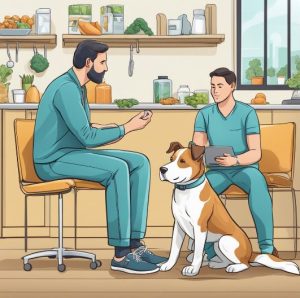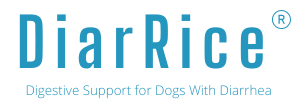Navigating Diet Shifts for Dogs: Signs It's Time to Consult a Vet

Navigating dietary changes for your dog involves careful consideration and planning. As a pet owner, your goal is to ensure that your dog's diet supports their health and well-being. Whether you're contemplating a switch due to health concerns, age-related needs, or simply to improve your dog's eating habits, understanding when and how to transition their food is crucial. A methodical approach helps mitigate risks associated with abrupt changes that could potentially upset your dog's digestive system or cause nutritional imbalances.
Consulting a veterinarian is key, especially when a diet shift is needed for health reasons. A professional can assess your dog's current diet and health status, guiding you towards a suitable new diet plan. If your dog has a chronic condition such as kidney disease or diabetes, or you are considering home-cooked or raw diets, a veterinarian's expertise is necessary to design a nutritionally complete and balanced diet that caters to your dog's specific needs. This expert advice ensures that your dog maintains optimum health during the transition period.
While shifting your dog's diet, close monitoring is essential to observe how they adapt to the new food. This includes watching for any signs of digestive upset or allergic reactions. Frequent check-ins with your vet allow for necessary adjustments to be made, ensuring the dietary change supports your dog's health without any adverse effects. Resilience and patience are important during this transition, as it may take time for your dog to adjust to the new diet fully.
Key Takeaways
- Careful planning is essential for successful diet transitions in dogs.
- Veterinary guidance ensures health-centered dietary changes.
- Monitoring your dog's response to a new diet aids in adjustment.
Assessing Your Dog's Current Diet and Health
Before making any changes to your dog's diet, it's crucial to evaluate their current health and diet plan. You'll need to understand your dog's body condition score and recognize signs of dietary problems to ensure their nutrient intake is optimal.
Understanding Body Condition Score
Your dog's body condition score (BCS) is a visual and tactile assessment of their weight, ranging from 1 (emaciated) to 9 (obese). To determine your dog's BCS:
- Observe their profile and overhead view. Your dog should have an "hourglass" shape when viewed from above.
- Feel their ribs, spine, and waist. You should be able to feel ribs without a heavy fat covering.
A score of 4-5 is considered ideal. Being overweight or obese can predispose your pet to health issues such as diabetes mellitus and osteoarthritis.
Recognizing Signs of Dietary Problems
Signs that your dog's diet may not be suitable include:
- Digestive Issues: Chronic diarrhea or vomiting could indicate a dietary intolerance.
- Skin and Coat Health: A dull coat or flaky skin might suggest a deficiency in essential fatty acids or other nutrients.
If you observe these symptoms, your dog's current diet may not be meeting their needs. Consultation with a veterinarian is recommended to discuss dietary supplements and establish a tailored diet plan. Your vet can provide guidance on the appropriate nutrient intake and whether your pet's condition necessitates a special diet.
Consulting a Veterinarian for Diet Transition
When considering a diet shift for your dog, it's essential to involve a veterinarian to ensure the health and safety of your pet. A vet's input is invaluable, especially if your dog has pre-existing health conditions or you're introducing a diet that's significantly different from their current one.
When to Seek Veterinary Advice
- Medical Conditions: If your dog has existing medical issues like allergies, diabetes, or obesity, you should consult a vet before altering their diet. Changes in nutrition can impact these conditions.
- Adverse Reactions: In the event of vomiting, diarrhea, or loss of appetite during a diet transition, contact your vet immediately. These symptoms can indicate intolerance or an adverse reaction to the new food.
- Preventive Measures: Even if your dog appears healthy, a preemptive consultation is advisable for a personalized diet plan. This includes considering breed-specific dietary needs and life stages.
The Role of Veterinary Nutritionists
- Expert Guidance: Veterinary nutritionists are specialists who can provide targeted advice on your dog's dietary requirements, ensuring they receive all the necessary nutrients.
- Custom Diet Plans: For dogs with specific nutritional needs or chronic health issues, a veterinary nutritionist can formulate a custom diet plan tailored to their unique requirements.
- Monitor Progress: Ongoing support from a veterinary nutritionist can help in monitoring your dog's response to the new diet and making adjustments as needed to maintain optimal health.
Designing a Tailored Diet Shift
When you are planning a diet shift for your dog, it's vital to focus on a gradual transition, selecting appropriate dog food, and managing weight during the change to ensure a healthy weight for your pet.
Creating a Gradual Transition Plan
To minimize digestive upsets, transition your dog to a new diet over a period of 7–10 days. Begin by mixing a small amount of the new food with the current diet, gradually increasing the proportion of the new diet each day. Feeding guidelines generally recommend the following mixing ratio:
- Days 1-3: 25% new diet, 75% old diet
- Days 4-6: 50% new diet, 50% old diet
- Days 7-9: 75% new diet, 25% old diet
- Day 10: 100% new diet
Choosing the Right Food for Your Dog
In selecting the right food, consider your dog's age, breed, and any special dietary needs. New diet options should be high-quality and formulated to meet nutritional standards established by the Association of American Feed Control Officials (AAFCO). Always check the ingredient list for real meat sources, vegetables, and grains that provide balanced nutrition, ensuring no abrupt weight loss occurs due to nutritional deficits.
Managing Weight During Diet Change
Throughout the diet change, monitor your dog's weight closely to avoid either weight loss or gain that could lead to health issues. Weight management is about maintaining a healthy weight: use a scale weekly to track changes, and if necessary, adjust portions slightly. Following are additional tips for weight management during diet change:
- Weekly Weigh-ins: Keep a log to track your dog's weight.
- Adjust Portions: If weight gain or loss occurs, adjust food portions accordingly.
- Regular Exercise: Maintain or slightly increase exercise to help manage weight.
Remember, if you notice any concerning symptoms or weight issues, consult your vet to ensure that your dog's dietary needs are being met effectively.
Monitoring and Adapting the New Diet
When transitioning your dog's diet, it's critical to monitor its response and make necessary adjustments. This ensures the new diet supports your dog's digestive system and overall health without causing distress or nutritional imbalances.
Observing Your Dog's Response
Keep a close eye on your dog after introducing the new diet. Signs of a positive response include:
- Normal stools: The absence of diarrhea or constipation is a good indicator that your dog's digestive system is adjusting well.
- Energy levels: A healthy diet should promote a normal energy level.
If you notice signs of digestive discomfort, such as diarrhea, it may be necessary to slow down the transition process. It's also important to monitor body weight, as any abrupt weight change could indicate a mismatch in calorie or nutrient intake.
Adjusting Portions and Meal Times
Your dog's new diet may require adjustments in portion sizes or meal times. Consider the following:
- Portion Sizes: Tailor portion sizes according to the specific needs of your dog's weight loss plan or maintenance needs. Your veterinarian can help determine the ideal calorie intake.
- Meal Times: Sticking to consistent meal times can help regulate your dog's hunger and digestion.
If you're unsure about the correct portion sizes or the best meal schedule, consulting with your vet is advisable. They can help ensure your dog receives the right nutrient intake without overfeeding or underfeeding.
Frequently Asked Questions
When navigating diet shifts for dogs, consulting a veterinarian can provide guidance on transition times, ingredients like pumpkin to aid the process, and life stage-specific dietary requirements. It's crucial to recognize the signs of a too-rapid diet change and understand the approach to safely shifting your dog's diet to a product like Royal Canin.
How long should a transition to new dog food take to avoid diarrhea?
Transitioning your dog to new food should typically take about 7-10 days. Gradually mix more of the new food with the old food each day, which allows your dog's digestive system to adjust without causing diarrhea.
Can pumpkins be used to help transition my dog to a new food, and if so, how?
Yes, plain, canned pumpkin (not pumpkin pie filling) is high in fiber and can help with digestion. Including a small spoonful with the new food can ease the transition and help to prevent stomach upset.
What are the recommended intervals for changing a dog's diet throughout its life?
The intervals for dietary changes depend on your dog's life stages and individual needs. Puppies, adult dogs, and seniors have different nutritional requirements, and a diet change usually coincides with these life stages or upon veterinary advice due to health issues.
What are the signs that a diet change in dogs is happening too quickly?
Signs that a diet is changing too quickly include gastrointestinal upset such as vomiting, diarrhea, or constipation. If these occur, slow down the transition and consult your veterinarian.
How can I safely shift my dog's diet to a brand like Royal Canin?
To safely shift to a brand like Royal Canin, introduce the food gradually over a week or more, progressively increasing the proportion of new food to the old. Always ensure the new diet is appropriate for your dog's age, breed, and health status.
What distinguishes the dietary needs of puppies from those of adult dogs?
Puppies require diets high in protein, fat, and calories to support their rapid growth and development. Adult dogs need a balanced diet to maintain their health but with fewer calories to prevent weight gain. Always ensure you're meeting specific needs based on their life stage.
Related Articles about Sudden Diet Changes in Dogs
Dog Diarrhea Diet Fix
Sudden Diet Changes Causes
Preventing Diet Changes
Dog Diarrhea Diet Signs
Managing Diet Changes
Safe Dog Diet Changes
Balanced Diet For Dogs
Dog's Slow Diet Changes
Risks of Sudden Diet Changes
Jeffrey Kordell
Dr. Jeff Kordell, DVM is a practicing veterinarian in the northern suburbs of Chicago. He is a graduate of the University of Illinois Veterinary School. Dr. Kordell owns Animal Medical Center at Fort Sheridan and has had his own private practice for over 30 years. He is the co-founder of K&S Veterinary Labs LLC the maker of DiarRice.

